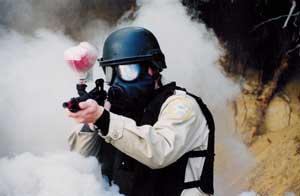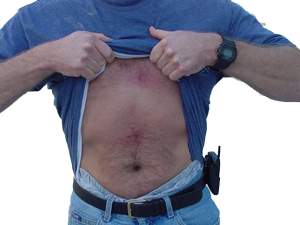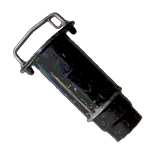On July 11, 2012, the 9th Circuit U.S. Court of Appeals upheld the denial of qualified immunity for police officers who fired PepperBall into a crowd of partygoers who posed no threat to them. In the case of Nelson v. City of Davis, 2012 DAR 9528, the court ruled that the use of force was unreasonable and violated "clearly established" constitutional rights.
You must make yourself and your department aware of this ruling as it pertains to the use of non-lethal chemical agents as a force option. This case coupled with other recent cases, Mark Young v. The County of Los Angeles and Fogarty v. Gallegos indicates what the federal court system thinks of the use of chemical agents as a force option. The 9th and 10th circuits believe that using chemical agents on a passive person whether in a crowd control situation or a traffic stop is an unreasonable use of force.
In the Nelson case Davis Police Officers went to a loud party call. They were trying to disperse the party goers, all students from UC Davis, when they fired PepperBall into a breezeway of the apartment complex. They were trying to use area denial tactics by breaking the PepperBall against the wall. One of the projectiles struck Nelson in the eye causing severe and permanent damage.
The 9th Circuit said; "To evaluate the need for the government's use of force against Nelson we consider a number of factors, including the severity of the crime at issue, whether . . .[Nelson] pose[d] an immediate threat to the safety of the officers or others, and whether he . . . actively resist[ed] arrest or attempt[ed] to evade arrest by flight." Graham, 490 U.S. at 396."
The 9th Circuit decided that officers were unreasonable in their use of force in this instance because there was not any crime charged against Nelson and if there had been it would have been only a "minor" misdemeanor. The court went on to find that Nelson standing within a group of students did not pose a threat to the officers and that their resistance in not moving did not justify the level force used. "Under these circumstances, the general disorder of the complex cannot be used to legitimize the use of PepperBall projectiles against non-threatening individuals."
The police officers did not give an order to disperse until after the PepperBall were fired. They went on to opine that even if they had ordered the students to disperse their non-compliance didn't rise to the level that PepperBall were justified.
 "…a reasonable officer would have known that firing projectiles, including PepperBall, in the direction of individuals suspected of, at most, minor crimes, who posed no threat to the officers or others, and who engaged in only passive resistance, was unreasonable."
"…a reasonable officer would have known that firing projectiles, including PepperBall, in the direction of individuals suspected of, at most, minor crimes, who posed no threat to the officers or others, and who engaged in only passive resistance, was unreasonable."
So be careful of when you use your PepperBall launchers. Don't use them on passive non-violent persons. Be sure everyone in the area hears your warning to disperse and the possible use of force. (If you haven't considered LRAD you might take a look.)
Be sure if you do use PepperBall or any non-lethal chemical agent that you document why it is the most reasonable force for the circumstances and that without its use officers or citizens would be injured. Just saying you were in fear of injury or death is not enough. Make sure you describe in your reports all the circumstances that lead to the conclusion that non-lethal chemical agents was the best alternative.
The 10th Circuit came to the same conclusion under strikingly similar circumstances. In Fogarty v. Gallegos, 523 F.3d 1147 (10th Cir. 2008)
- Jones and Mayer Client Alert
- 9th Circuit Findings in Nelson v. City of Davis
- 9th Circuit findings in Young v. County of Los Angeles





